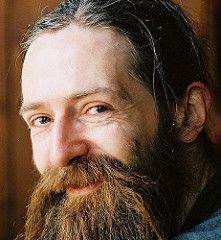(End of series. For previous topics please see parts I-IX)
Power plants. Trees could do a lot, as we have seen — and they’re solar powered, too. Once trees can suck metals from the soil and grow useful, shaped objects like copper wire, a few more levels of genetic engineering could enable the tree to use this copper wire to deliver electricity. Since a tree is already, now, a solar energy converter, we can build on that by having the tree grow tissues that convert energy into electricity. Electric eels can already do that, producing enough of a jolt to be lethal to humans. Even ordinary fish produce small amounts of electricity to create electric fields in the water around them. Any object nearby disrupts the field, enabling the fish to tell that something is near, even in total darkness. We may never be able to plug something into a swimming fish but we can already make batteries out of potatoes. So why not trees that grow into electricity providers all by themselves? It would be great to be able to plug your electrical devices into a tree (or at least a socket in your house that is connected to the tree). Then you would no longer need to connect to the grid, purchase solar panels, or install a windmill. You would, however, need to keep your trees healthy and vigorous! Tree care specialists would become a highly employable occupation.
Greening the desert. The Sahara and various other less notorious but still very dry deserts around the world have plenty of sand and rocks. But they don’t have much greenery. The main problem is lack of water. Vast swaths of the Sahara, for example, are plant free. It’s just too dry. However this problem is solvable! Cacti and other desert plants could potentially extract water from the air. Plants already extract carbon dioxide molecules from the air. Even very dry air contains considerable water vapor, so why not extract water molecules too. Indeed, plants already transport water molecules in the ground into their roots, so is it really such a big step to do the same from the air? Tillandsia (air plant) species can already pull in water with their leaves, but it has to be rain or other liquid water. Creating plants that can extract gaseous water vapor from the air in a harsh desert environment would require sophisticated genetic engineering, or a leap for mother nature, but it is still only the first step. Plants get nutrients out of the soil by absorbing fluid that has dissolved them, so dry soil would be a problem even for a plant that contained plenty of water pulled from the air. Another level of genetic engineering or natural evolution would be required to enable them to secrete fluid out of their roots to moisten chunks of soil to dissolve its minerals, and reabsorb the now nutritious, mineral-laden liquid back into their roots.
Once this difficult task is accomplished, whether by natural evolution in the distant future or genetic engineering sooner, things will be different in the desert. Canopies of vegetation that hide the ground will be possible. Thus shaded and sheltered, the ground will be able to support a much richer ecosystem of creatures and maybe even humans than is currently the case in deserts. One of Earth’s harshest environments would be tamed.
Phyto-terraforming. To terraform means to transform a place into an Earth-like state (terra is Latin for Earth). Mars for example is a desert wasteland, but it once ran with rivers, and it would be great if the Martian surface was made habitable — in other words, terraformed. Venus might be made habitable if we could only get rid of its dense blanket of carbon dioxide, which causes such a severe greenhouse effect that its surface is over 800 degrees Fahrenheit, toasty indeed. And why not consider terraforming inhospitable terrain right here on earth, like the Sahara desert, or Antarctica. Phyto-terraforming is terraforming using plants. Actually plants are so favored for this task that when people discuss terraforming, they usually mean phyto-terraforming. Long ago, plants did in fact terraform the Earth, converting a hostile atmosphere with no oxygen but plenty of carbon dioxide into a friendly one with enough oxygen that we can comfortably exist. Plants worked on Earth, and might work on Mars or even Venus, but not on the moon. The reason is that plants need carbon dioxide and water. Venus has these (and reasonable temperatures) high in the atmosphere, suggesting airborne algae cells. Mars is a more likely bet as it has water (as ice) available to surface-dwelling plants at least in places.
If Mars is the most likely candidate for phyto-terraforming, what efforts have been made to move in that direction? A first step has been to splice genes into ordinary plants from an organism that lives in hot water associated with deep ocean thermal vents. This organism is named Pyrococcus furiosus (Pyro- means fire in Greek, coccus refers to ball-shaped bacteria, hence “fireball”). Pyrococcus is most comfortable living at about the boiling point of water and can grow furiously, double its population in 37 minutes. It has evolved genes for destroying free radicals that work better than those naturally present in plants. Free radicals are produced by certain stressors in plants (and humans), cause cell damage, and can even lead to death of the organism. By splicing such genes into the plant Arabidopsis thaliana, the experimental mouse of plant research, this small and nondescript-looking plant can be made much more resistant to heat and lack of water. These genes have also been spliced into tomatoes, which could help feed future colonists. Of course Mars requires cold, not heat tolerance, but the lack of water part is a good start. The heat and drought parts might be useful for building plants to terraform deserts here on Earth, bringing terraforming of Earth deserts a couple of steps closer. With several additional levels of genetic modification, we might eventually terraform Mars yet.
Recommendations
When the advances described here are likely to happen would be good to know. Will they occur in your lifetime? Your grandchildren’s? Thousands or millions of years into the future? If the latter, there is not much point in devoting precious national funds to help bring them about, but if the former, it might be worth the expense of hurrying the process along. To determine the likely timing of future technological advances, we need to determine the speed of advancement. To measure this speed, we can look at the rate at which advances have occurred in the past, and ask what will happen in the future if advances continue along at the same rate. This approach is influential in the modern computer industry in the guise of “Moore’s Law.” However it was propounded at least as early as about 2,500 years ago, when Chinese philosopher Confucius is said to have noted, “Study the past if you would divine the future.” It would be nice to know when we can expect to grow and eat potatoes with small hamburgers in the middle, pluck nuggets of valuable metals from trees, power our homes by plugging into electricity-generating trees growing in our back yards, or terraform Mars.
Opening the floodgates of genetic engineering innovation. Properly regulated to optimally benefit society, genetic engineering of plants has enormous potential, from better and better-tasting food to growing amazing things on trees. However governmental regulation is currently suppressing such advances. Preparing applications to government regulatory agencies for permission to commercially grow genetically engineered plants currently costs many millions of dollars in many countries. Thus only genetic modifications to major commodity crops like corn and soy are generally cost-effective to commercialize. Worse, only big agribusinesses can afford the costs. And why should they object? After all, who needs small, game-changing startup companies moving in, upending the status quo, creating new economic growth and value with new kinds of crops, and generally making life complicated for the giant agribusinesses? Simpler just to keep the costs of applying for permission to grow so high that such upstarts are kept out of the picture. That way predictable profits flow in even if, overall, innovation and the consequent economic expansion is suppressed. But you can’t blame the giants, which are legally obligated to serve the interests of their shareholders. It is illegal for a corporation in the US to further the interests of society at substantial expense to its shareholders! Governments should regulate commercialization of genetically engineered crops optimally, protecting the world from harmful frankenplants while promoting exciting, progressive and beneficial crop innovations.
References
“We may never be able to plug something into a swimming fish, but we can already make batteries out of potatoes.” A. Golberg, H. D. Rabinowitch, and B. Rubinsky, Zn/Cu-vegetative batteries, bioelectrical characterizations, and primary cost analyses, Journal of Renewable Sustainable Energy (2010), Vol. 2, Issue 3, http://jrse.aip.org/jrsebh/v2/i3/p033103_s1, doi:10.1063/1.3427222.
“This organism is named Pyrococcus furiosus…”: G. Fiala and K. O. Stetter, Pyrococcus furiosus sp. nov. represents a novel genus of marine heterotrophic archaebacteria growing optimally at 100°C, Archives of Microbiology (June 1986), vol. 145, no. 1, pp. 56–61.
“By splicing such genes into the plant Arabidopsis thaliana…this small and nondescript-looking plant can be made much more resistant to heat and lack of water.” W. F. Boss and A. M. Grunden, Redesigning living organisms to survive on Mars, NASA Institute for Advance Concepts Annual Meeting (2006), http://www.niac.usra.edu/files/library/meetings/annual/oct06/1194Boss.pdf
“They have also been spliced into tomatoes, which could help feed future colonists.” W. Boss, http://www.cals.ncsu.edu/plantbiology/BossLab/hfiles/overview.html, 5/29/10.


 The summer 2010 “
The summer 2010 “ Also speaking at the H+ Summit @ Harvard is
Also speaking at the H+ Summit @ Harvard is 
